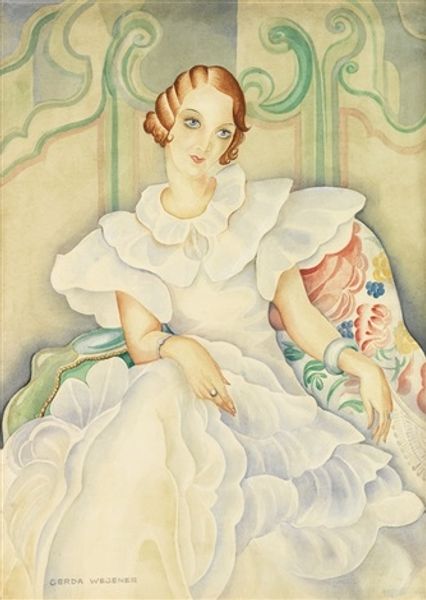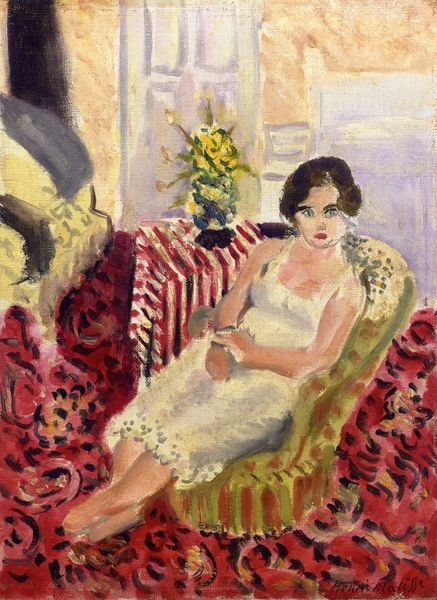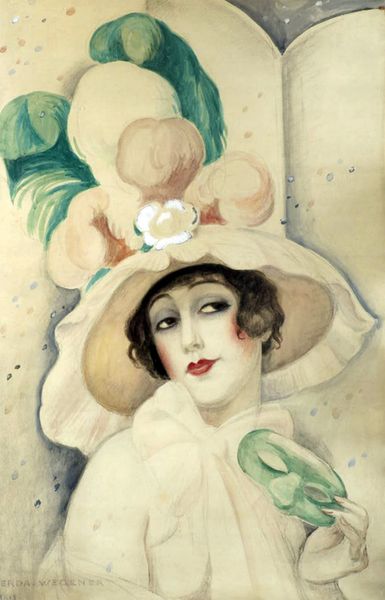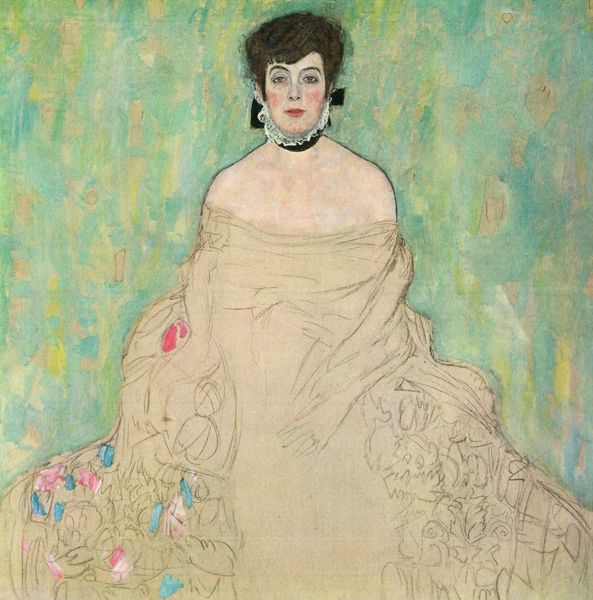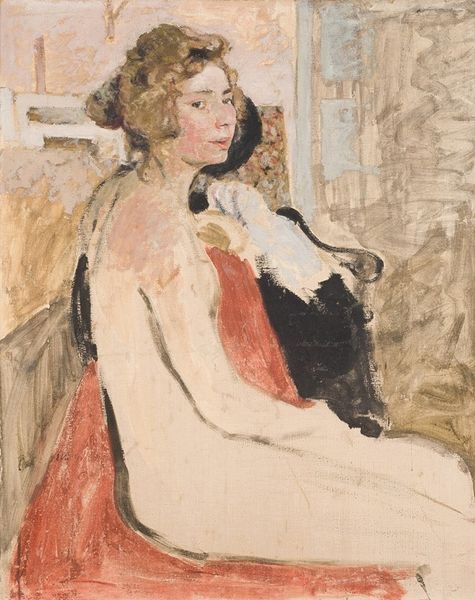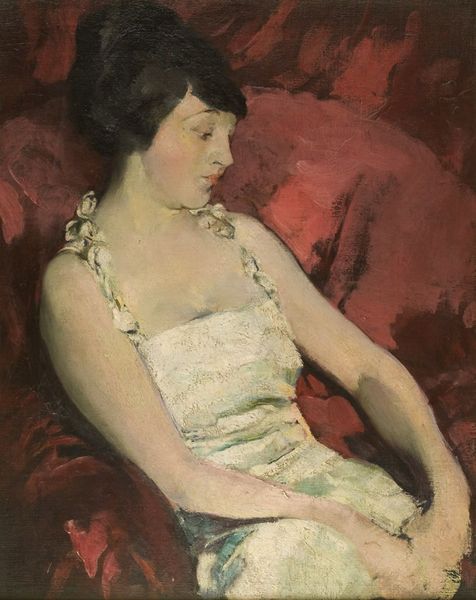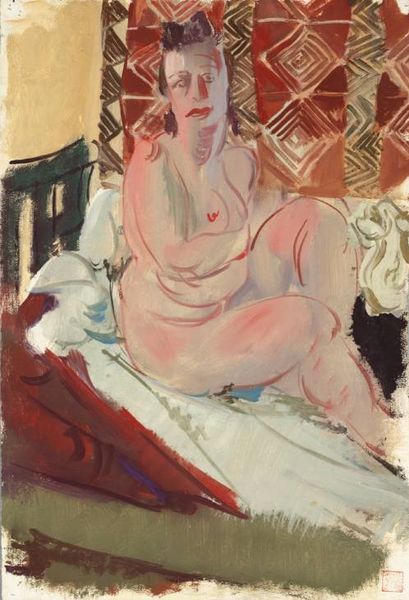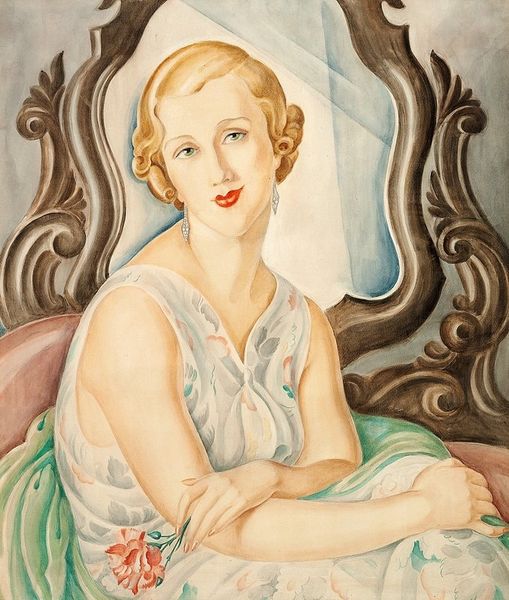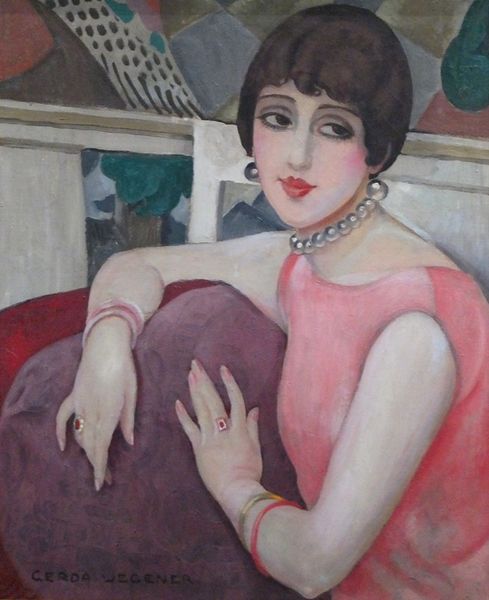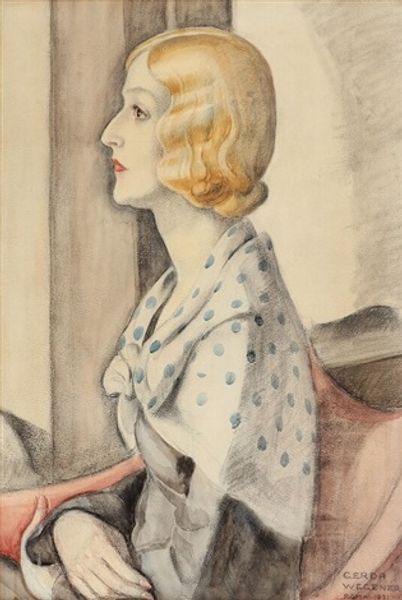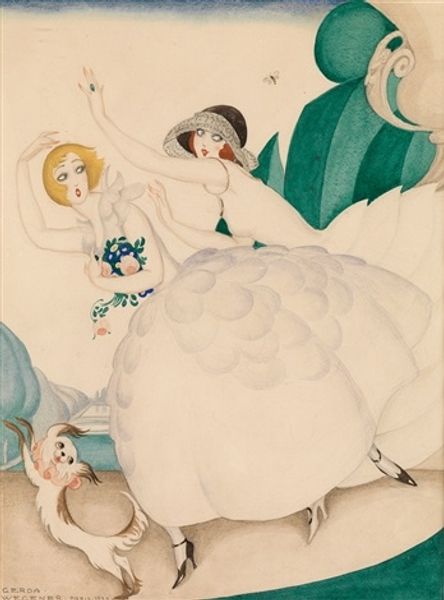
painting, watercolor
#
portrait
#
figurative
#
art-nouveau
#
painting
#
figuration
#
watercolor
#
intimism
#
watercolour illustration
#
genre-painting
#
watercolor
Copyright: Public Domain: Artvee
Curator: Well, hello there. What’s your first impression of Gerda Wegener’s "Portrait of a Young Woman in a White Dress?" It feels a little like stepping into a dream, doesn't it? Editor: I'm immediately struck by how subdued the colors are, almost monochromatic, with only faint traces of blush and muted green. The delicate washes create a sense of melancholy and detachment. There’s a softness here that veils, maybe even protects, the sitter. Curator: You know, Gerda really had a knack for capturing that hazy, introspective mood. It makes me wonder about the sitter herself – who was she, really? Was she aware of the societal constraints bearing down on women at the time, just hiding beneath those frills and lace? It’s all so…fragile, somehow. Like it could vanish with a breath. Editor: Absolutely. Wegener was painting within a very specific socio-political climate for women, even within artistic circles. The white dress is a fascinating detail. While superficially suggesting purity and innocence, white has long been a fraught signifier used to uphold social hierarchies. Is it conformity, aspiration, or is Wegener critiquing these ideals by hinting at the superficiality of these symbols through the medium’s fluidity? Curator: Oh, I love that read! It’s funny how these old watercolors can hold so much rebellion, whispering against the constraints. Her work plays with this dance between appearances and what simmers underneath. There's an unmistakable gaze. It’s demure but there’s something else there. Defiance? Resignation? The genius is she doesn't spell it out. Editor: I agree completely. I find that it positions us, as contemporary viewers, to consider the nuances of female representation in art—and how artists like Wegener might have used subtle visual cues to question the expected gender roles of their time, embedding subversive messaging through the faintest of color washes or a slightly suggestive gesture. Curator: And what’s especially delicious is thinking about her relationship with Lili Elbe, and how they both navigated societal expectations, queerness, and art, all at the same time. Did that influence her art, of course it did. It’s all there in the undercurrents. Editor: Precisely. Considering Wegener's biography encourages us to move beyond mere aesthetic appreciation to considering art's vital function as a historical and deeply personal record. A very moving piece all around. Curator: Yes, and it leaves you pondering long after you’ve left the room. Wonderful, really.
Comments
No comments
Be the first to comment and join the conversation on the ultimate creative platform.
